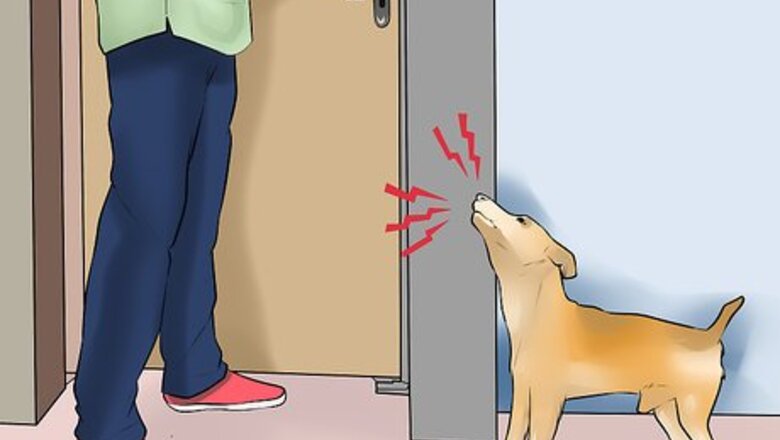
views
Figuring Out Your Dog’s Triggers
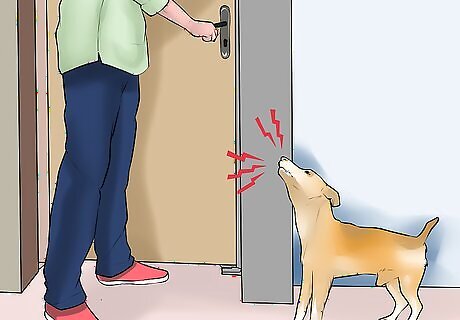
Understand separation anxiety. If your dog suffers from separation anxiety, it means that it gets extremely anxious whenever you leave the house. This may be because they are afraid of being alone, or because they are unsure when you will return to provide and care for them. Whatever the reason, many dogs become anxious when their owners leave. This could mean that your dog feels afraid and nervous whenever you aren’t around. If your dog suffers from this condition, you should consider helping them with desensitizing techniques.
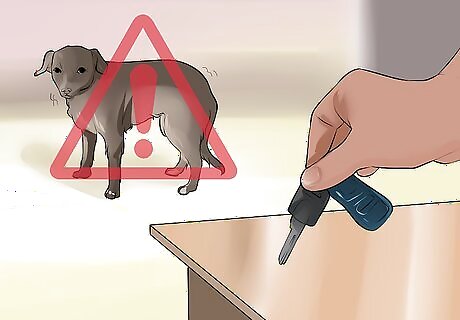
Monitor your dog’s behavior. When you are about to leave your house, you probably notice that your dog is already anxious. Your dog has figured out that you are going to leave by the things you do, and the way you act before you go. These things that you include in your pre-departure routine are possible triggers for your dog that make it anxious because they tell your dog you are about to leave again. Possible triggers for separation anxiety include putting on your shoes, grabbing your keys, putting on your jacket, picking up your purse, or any other thing that indicates an imminent departure to your pet.
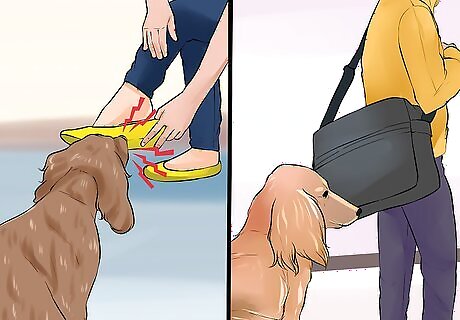
Try a variety of pre-departure routines to pinpoint your dog’s triggers. Try to figure out which things specifically make your dog feel anxious. You can try this by getting ready to leave out of your dog’s line of sight and only letting them see you do one things each time you leave. Or change the order of your departure routine to see when they start acting anxious. For example, you could try picking up your purse before you put your shoes on to see if one or the other happens to elicit the anxiety response you expect.
Using Desensitization Techniques
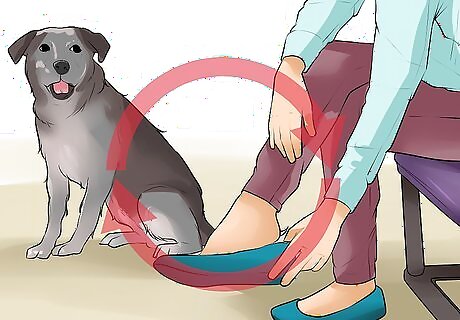
Understand the purpose of desensitization. Desensitization is the process by which something becomes less foreboding because of constant or repeated exposure to that thing. The point of desensitization is to make the scary thing less scary by encountering it more frequently. In this case, if your dog is upset by your absence and becomes anxious by your departure, you need to pinpoint what things trigger these feelings in your dog and then expose your dog to this behavior in random intervals not related to your leaving.
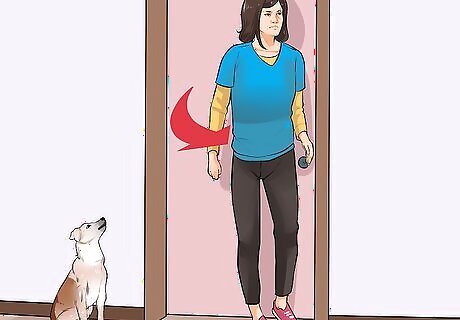
Do those things more often, when you're not leaving. This causes your dog to lose the association of you going away with you putting on your jacket. There is some effort involved, but it's worth the time it takes. Once you have finished multiple repetitions of desensitization exercises, your dog will be more relaxed and happier when you are gone. If your dog knows you are going to leave when you pick up your keys, grab your keys more often. Put on your jacket, pick up you keys, and go to the door throughout the day. When you get there, turn around and go back to what you were doing. Some other possible triggers include: putting on your shoes, making coffee, saying goodbye or hugging family members, turning out all the lights in the house, closing the curtains, setting the house alarm, or even brushing your teeth. Whatever your dog’s trigger seems to be, spend some time doing those activities throughout the day and then returning to your other activities at home. This way, your dog will begin to stop associating these activities with your departure from the house.
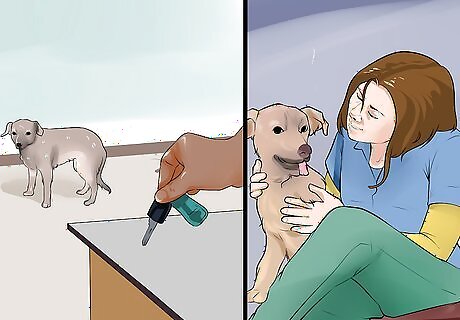
Switch it up. Keep doing the pre-departure routine activities in various orders at various times throughout the day, especially when you’re not leaving. Frequent exposure to these things that used to give your dog anxiety will reduce your dog’s anxiety over time. Go to the door and pick up your purse and stand there for a minute. Then put your purse down and go sit on the couch and pet your dog. Do things like this constantly until your dog starts exhibiting less anxiety when you do them.
Leave for a short amount of time. Once your dog is showing less anxiety over your pre-departure routine, step out the door for a small amount of time. After about 10 seconds, return and continue doing things around the house. As your dog adjusts to you going out the door, gradually increase the amount of time you're gone.
Recognizing the Symptoms of Separation Anxiety
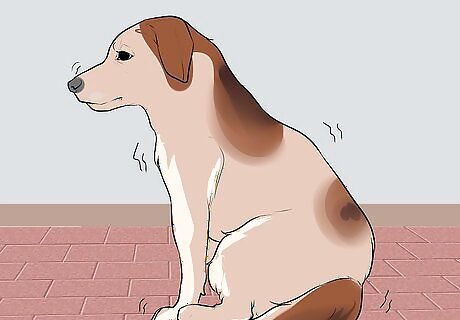
Watch for trembling and whining. If your dog seems to tremble and whine when you are getting ready to leave the house, it is probably a sign of separation anxiety. Dogs are keen observers of human behavior, so they can learn to recognize the signs of your imminent departure. If your dog starts trembling and whining as you put your jacket on, grab your keys, or do any other pre-departure activities, this probably means it suffers from separation anxiety.
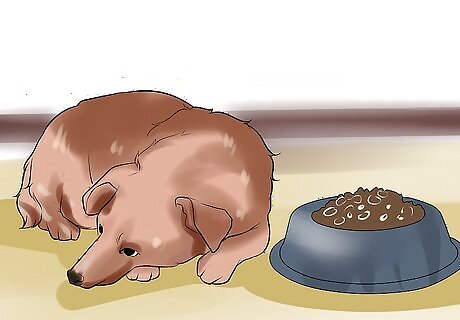
Notice if your dog seems to avoid its food. Loss of appetite, especially as you prepare to leave and while you’re away, is a big sign of canine separation anxiety. If your dog is feeling anxious, it will be less likely to eat its food. Try to feed your dog right before you leave and see if it eats. Also, notice how much food your dog has each time before you leave and check the level again when you return. If, over the course of many times, it appears that your dog isn’t eating while you’re gone, then your dog probably suffers from separation anxiety.
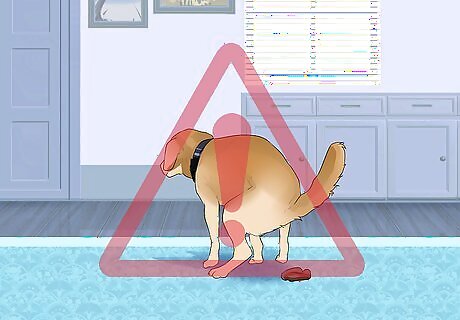
Monitor for bathroom accidents. Many dogs who suffer from separation anxiety end up having accidents in the house while their owners are gone because they are so upset at being left alone and they feel like they don’t have any idea about when their owner will return. This can cause a dog to feel the need to relieve themselves instead of waiting for the owner’s return. Be mindful to look for any accidents your dog may have had while you were gone, especially at the door they use to go outside. Also be careful not to leave your dog alone for too long without access to outside to use the bathroom. Any dog will eventually have to go to the bathroom if you leave them alone long enough, whether or not they suffer from separation anxiety.
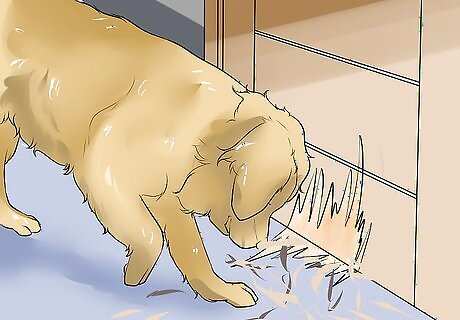
Watch for chewing or digging at exits. If a dog suffers from separation anxiety, it may be likely to spend a lot of time at the door you leave through while you are gone. This may lead to anxious biting, chewing, or digging at the door or nearby surroundings in an attempt to get to where your dog thinks you went. Check the exits of your home for signs of bite marks or claw marks to see if your dog is exhibiting this behavior.
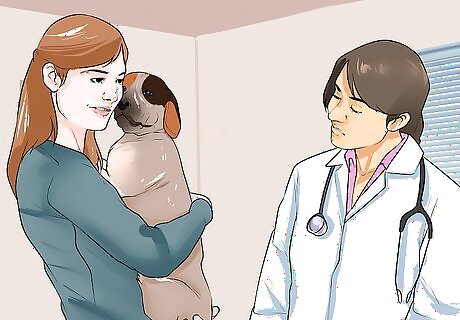
Consult your veterinarian. If your dog continues to exhibit symptoms of separation anxiety even after you try the desensitization method for several weeks, it may be time to talk to your vet about other possible causes and cures. Your vet may be able to recommend some further treatment that will help your dog feel less anxious. Possible treatments include anxiety medication that could help lower your dog’s stress levels. However, this will probably only be recommended by your vet in very extreme cases.




















Comments
0 comment